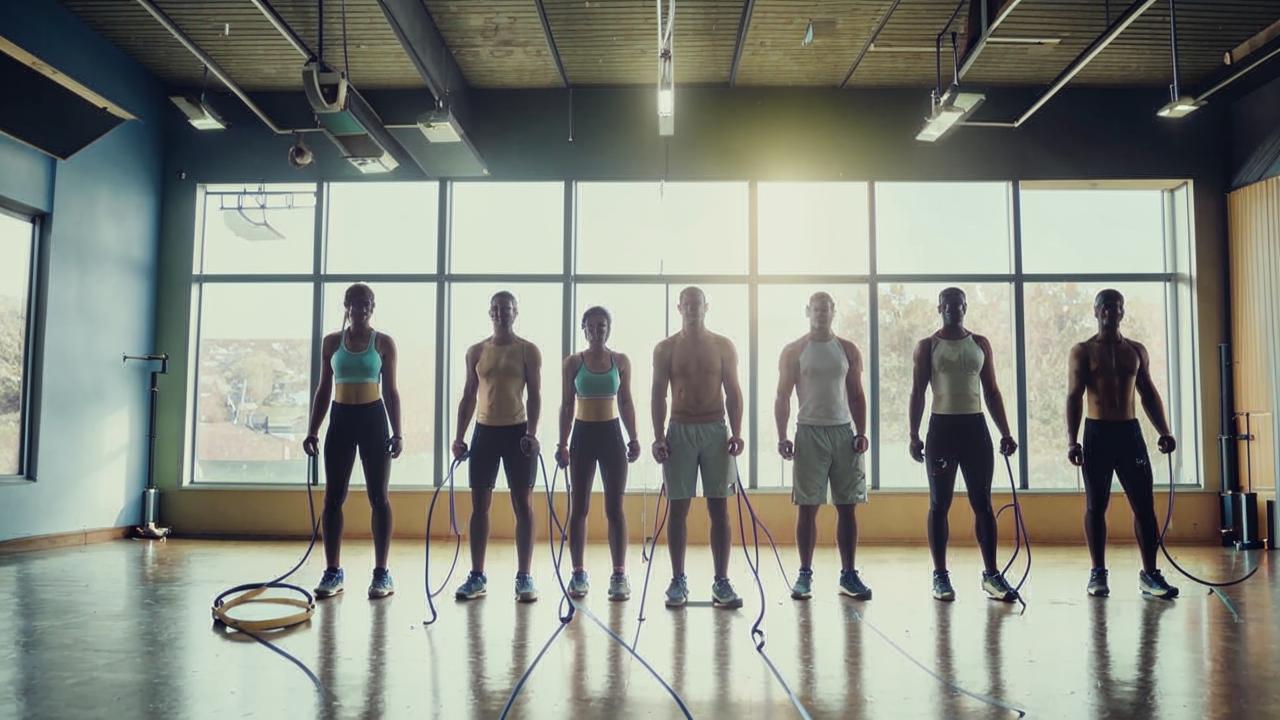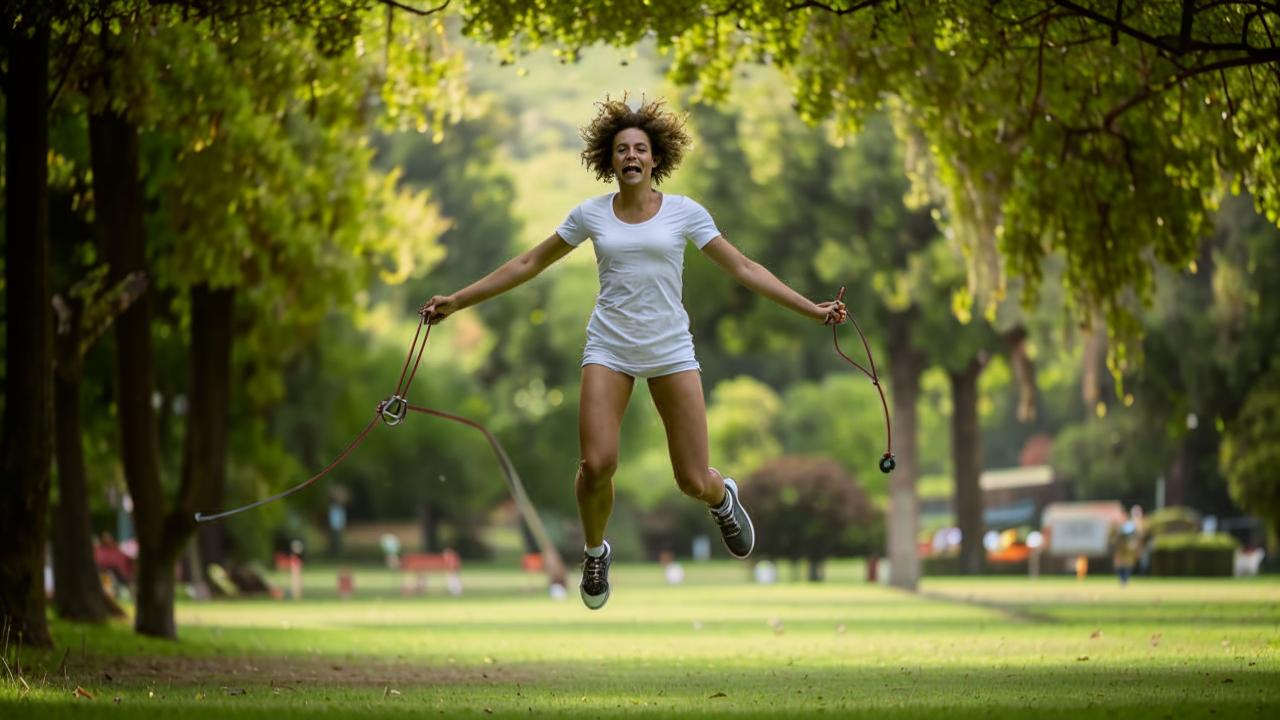What’s difficult about spinning a jump rope and bouncing in time? It seems like nothing. But if you go deeper, it becomes clear that this is a complex coordination exercise, where not only speed is important, but also dexterity and the ability to control your body. So if you are a beginner and have not yet learned to jump – do not worry. It can be learned, and now we’ll tell you how.

professional Russian racing driver, master of sports, three-time champion of Russia in motor racing.
“Jumping rope is one of the most versatile exercises that professional athletes often include in their training. It is not only a great way to develop endurance, reaction time and coordination, but also an effective cardio workout, which helps to reduce weight and also strengthens the muscles of the whole body, cardiovascular and respiratory systems”.
Safety Techniques
Jumping jacks are a great warm-up before any type of workout, but they should be performed with caution if there are knee injuries, joint diseases, spine. Therefore, before you include jumping rope in your regular exercise, you should consult a doctor and make sure that they will not harm.
To reduce the load on the joints, it is also important to choose comfortable sports shoes – sneakers with elastic soft soles, tightly sitting on the foot. This will create additional cushioning, eliminate slipping, and protect the feet from accidental impacts. Clothing should also fit tightly to the body, there should be no additional elements on it, which can catch the rope.
Theflooring should be elastic, so that the load on the joints was minimal, but at the same time not soft, the feet should not fall through. Ideal for jumping – lawn, rubberized floor in the gym, running track of the stadium. If you’re jumping on a hard surface, it’s better to lay down a sports mat. When exercising at home, make sure that there is free space around you at least 8-10 meters in radius, and also do not forget to wear sneakers.

How to choose a jump rope?
Despite the wide variety of jump ropes (weighted, speed, counter and others), it is better to start with the simplest version without additional options.
To determine the correct length of the rope, stand with one foot in the middle of the rope and stretch the rope along your body – the ends of the handles should reach your armpits. Another option is to wrap your arms around the handles and extend your straight arms in front of you parallel to the floor. The cord should not hang over the floor or lie on it, the appropriate length is when the cord lightly touches the floor.

5 steps to master jumping rope
Before you start jumping, be sure to warm up. Joint gymnastics will work very well – work every part of the body, starting with the neck and ending with the feet.
Next, work with a jump rope separately with hands and feet, so that the body has mastered each movement:
- Take the starting position: stand up, back straight, shoulders relaxed, abs toned. Take the jump rope in one hand and without jumping start to rotate the cord in circular motions due to the work of the hand. It will be enough to perform five to eight repetitions clockwise and counterclockwise. Repeat the same for the other hand.
- Put the jump rope aside and assume the starting position. Start jumping in place, pushing off with your big toes. Land on the pads of your toes. To begin with, it will be enough to perform five to eight jumps.
Now combine the skills you have learned into a single exercise:
- Take the starting position, take the handles of the jump rope in your hands, the rope behind your back, under your knees. Slightly bend your arms at the elbows and take them forward.
- Take a swing and jump. Return to the starting position. For a while, perform the combination “swing – jump – stop”. This will help you practice the skill.
- Next, start mastering a series of two, five or more jumps.
When you have learned the basic exercise, try performing jumps with different amplitude: low hops, high jumps. Also perform jumps for time – for 10-30 seconds, gradually increasing the duration and pace.
At the beginning we recommend jumping three times a week for 5-10 minutes, gradually increasing the duration of exercise. At the end, don’t forget to warm up – stretching exercises are great.

Various techniques
Once you have perfected the base, you can move on to more complex jumps. Variations are quite a lot.
- On one leg. The same principle as in the classic variant, only in the jump involves one leg, and the second is bent at the knee and pulled back.
- Running in place. During each turn of the rope around the body, instead of jumping, a simple change of legs is performed, as in running. If it’s difficult to “run,” try simply taking steps, gradually increasing the pace.
- Scissors. During the jump and one turn of the rope around the body, you must quickly move your legs crosswise and return them to the starting position.
- Boxer jumps. Take the starting position, put your feet close to each other. Start jumping, bouncing low off the floor and constantly shifting your weight from one foot to the other from right to left.
- Double jumps. This type of jumps can be mastered when you have learned to do a series of 50 or more jumps in the basic exercise. The main difference is that during one jump the rope must make two turns around the body. This is achieved by accelerating the work of the hands.

Mistakes in jumping rope
When performing this seemingly simple exercise, it is important to follow the technique and avoid typical mistakes:
- Keep your gaze downward. Look forward and keep your back straight.
- Do not arch forward or backward. Keep your body and shoulders still and use your hands to rotate the rope.
- Do not put your hands on your shoulders before jumping. Always check the starting position: the cord is behind your knees, arms slightly bent at the elbows, brought forward.
- Do not spread your arms wide. Elbows should be near the body, forearms slightly apart.
- Do not jump on the whole foot. Jump on your toes and land on your toes, not on your heels.
- Do not land on flat feet. They should be slightly bent at the knees, but straighten them when pushing off.
- Do not hold your breath. Breathe evenly, at the same pace.
If these rules are followed, jumping rope will be much easier, and the risk of injury will be reduced to a minimum. Gradually and systematically move to the cherished jumps, and most importantly – have fun.






